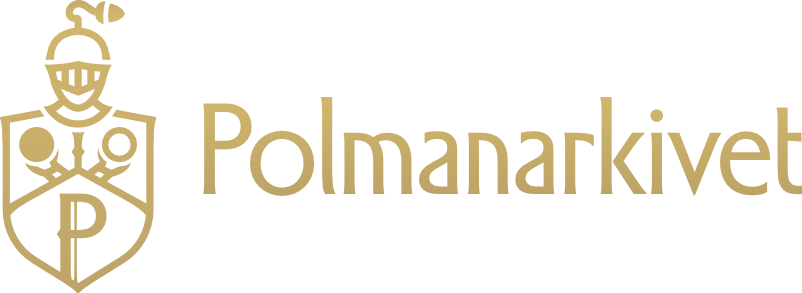In 1890, the Swedish heraldist and genealogist Carl Arvid von Klingspor published his armorial book on the entire Swedish nobility’s coat of arms. Now, on 18 April this year, Sweden will wake up to the publication of Sveriges Ridderskap och Adels vapenbok by baron Otto von Schwerin and Göran Mörner, the first encyclopedia in 134 years describing the coats of arms of the Swedish nobility still living today.
With the publication of Sverige Ridderskap och Adels vapenbok, a link is created to the books of arms that were published during three centuries from 1650 to 1890. The complete coats of arms of 657 living families are presented in the book (with some additions). Extensive research has been carried out to ensure arms that match original shield letters, armorial drawings and other sources that are close to the respective monarch’s original intention. Baron Otto von Schwerin illustrated new weapons from the 13th to 19th centuries for this book. He has also drawn coats of arms for the 2001-2013 and 2022-2025 editions of the Nobility Calendar. The book also includes a foreword by Carl Michael Raab, the former State Herald of the National Archives of Sweden.

10 Questions with Göran Mörner
I recently had the pleasure of interviewing Göran Mörner about his new book. Mörner is a heraldic researcher and the Chief Genealogist at Riddarhuset (the House of Nobility), having been a knight’s house genealogist since 2010. In the interview, Mörner discusses the behind-the-scenes process of creating the book, his favorite armorial book, and which historical figures he would invite to dinner at the House of Nobility.
Cedercrona. Stiernstedt. Klingspor. And now von Schwerin and Mörner. What compelled you to undertake the task of compiling a book on the Swedish nobility’s Coats of Arms, especially since it hasn’t been done in over a century?
It was baron Otto von Schwerin’s initiative. During the Covid lockdown he started to draw the pictures. Soon he needed my information and feedback.
“Sveriges Ridderskap och Adels vapenbok” is a coat of arms book about Sweden’s knighthood and nobility. Are there armorial books that you especially admire?
All books are lovely. But I especially admire Keyser from 1650.
What book might people be surprised to find on your shelves?
On the shelves at Riddarhuset? The library isn’t that large actually. For insurance reasons I cannot tell about the most unique items. The archive contain the world’s largest collection of original letters patent – about 700! Date from 1508 to 1885.
Which researchers — scholars, historians, heraldists, genealogists, antiquarians — working today do you admire most?
Oh my. If I mention one or two – there are so many I don’t mention. And that wouldn’t be nice of me.
Which subjects do you wish more researchers would write about?
About heraldry? Hard to tell. Perhaps how blazons are misunderstood and how a Coat of Arms can “degenerate” and become misunderstood during the centuries?
What research did you conduct for this book, and did you uncover anything surprising or fascinating?
Massive research! Primarily firsthand sources like original letters patent.
Can you share a behind-the-scenes anecdote or interesting fact about the creation of this book?
Receiving some pictures of coat of arms in letters patent I realized that there had been a great misconception of the objects and colors in some Coats of Arms. These letter patents were in private possession and hadn’t been shown to the public in 350 years.
What do you hope readers will take away from “Sveriges Ridderskap och Adels vapenbok?”
Something like “finally I know what my Coat of Arms really should look like!”.
There is an event coming up at the House of Nobility for the book release. What can people expect?
Doors open at 17:00. A glass of wine. Speeches by me and baron Otto von Schwerin about 17:45. Mingle and meet old and new friends. Opportunity to buy the book for just 200 SEK and get it signed by the authors.
Finally, imagine you’re organizing a dinner party at the House of Nobility. Which three people from history do you invite?
In this case. Perhaps the first artist Heinrich Keyser and ask him about all the troubles he went through with the disappointed nobility about his book. The second artist Carl Ludvig von Schantz and ask him where he has hidden the long-lost manuscript of the second armorial book. And the state herald Carl Arvid Klingspor and how he approached his work and what sources he used.
Tack Göran!
The book release and book signing event will be held Thursday 18th April, 17:00 – 19:00 at Riddarhuset (the House of Nobility). There is a special price on the book of only 200 SEK. Everyone is welcome. Please reply to osa@hemerabok.se and register your interest here.







